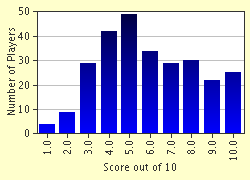Quiz Answer Key and Fun Facts
1. The game became known as the "Ice Bowl" because the field was a sheet of ice and the air temperature at game time was -13 Fahrenheit. What extraordinary measure had been used to try to keep the field playable?
2. How did Cowboy receiver Bob Hayes help the Packer defense throughout the game?
3. How cold were conditions that day?
4. Which uncharacteristic miscues by the Packers led to the first 10 points for the Cowboys?
5. How did Cowboys' halfback Dan Reeves figure in the touchdown that put his team ahead 17-14?
6. A month after the game, Vince Lombardi announced his retirement from coaching, making this the last game he coached in Green Bay. For what Packer player was this the last game he played in Green Bay?
7. The Packers won the game on Bart Starr's quarterback sneak. The play called in the huddle was "31 Wedge." As the "31 Wedge" play was written, who was intended to carry the ball?
8. In the famous photograph of Bart Starr's winning touchdown, Chuck Mercein can be seen with both hands in the air. He later said that he was not signaling a touchdown. Why did he say his hands were in the air?
9. What was later shown to have happened on Starr's touchdown that could have changed the game's outcome?
10. The dramatic ending of the game helped provide the name of the book that Jerry Kramer and Dick Schaap wrote, based on Kramer's diary of the season. What was the book's title?
Source: Author
d2407
This quiz was reviewed by FunTrivia editor
Nightmare before going online.
Any errors found in FunTrivia content are routinely corrected through our feedback system.

